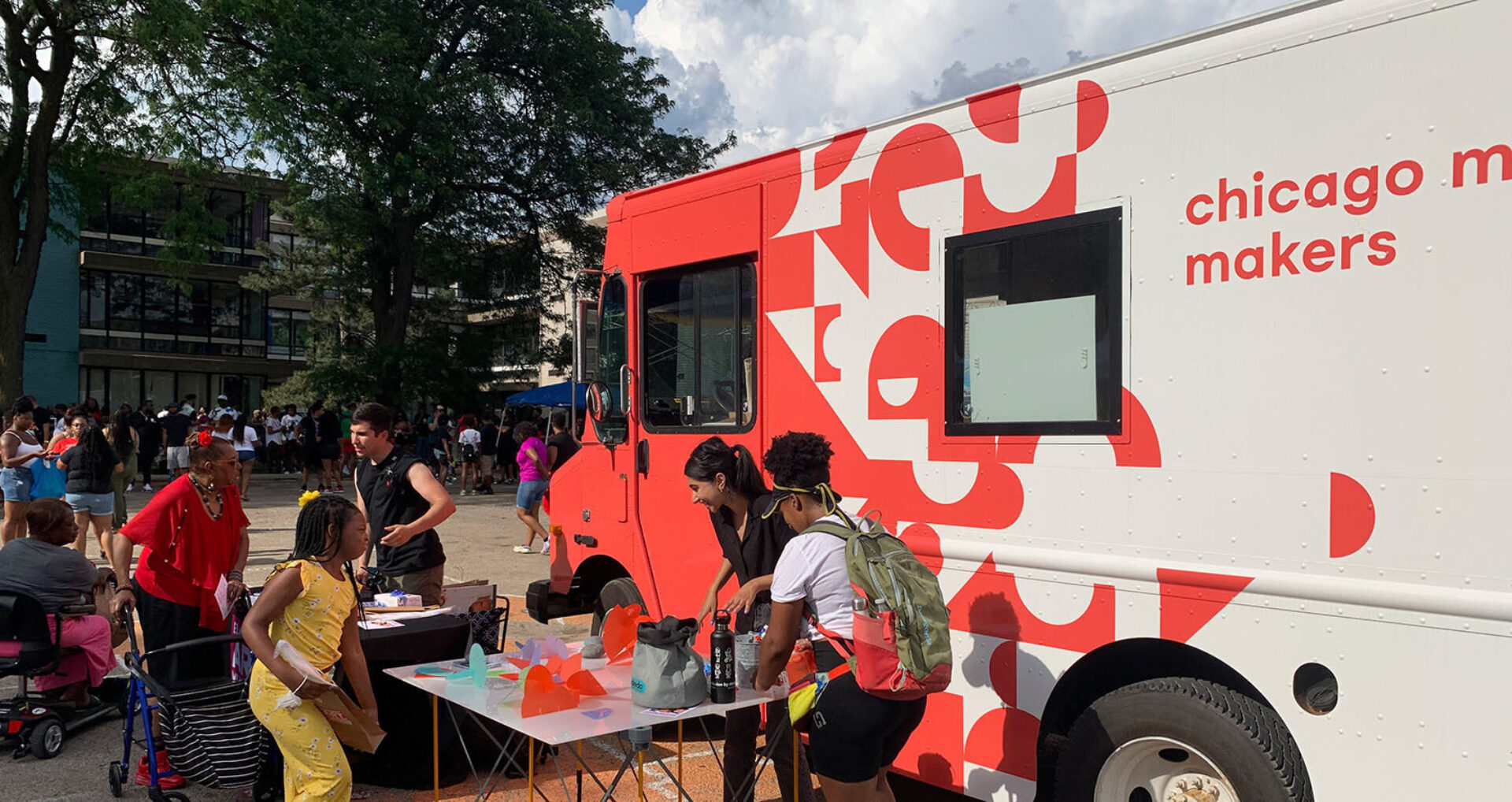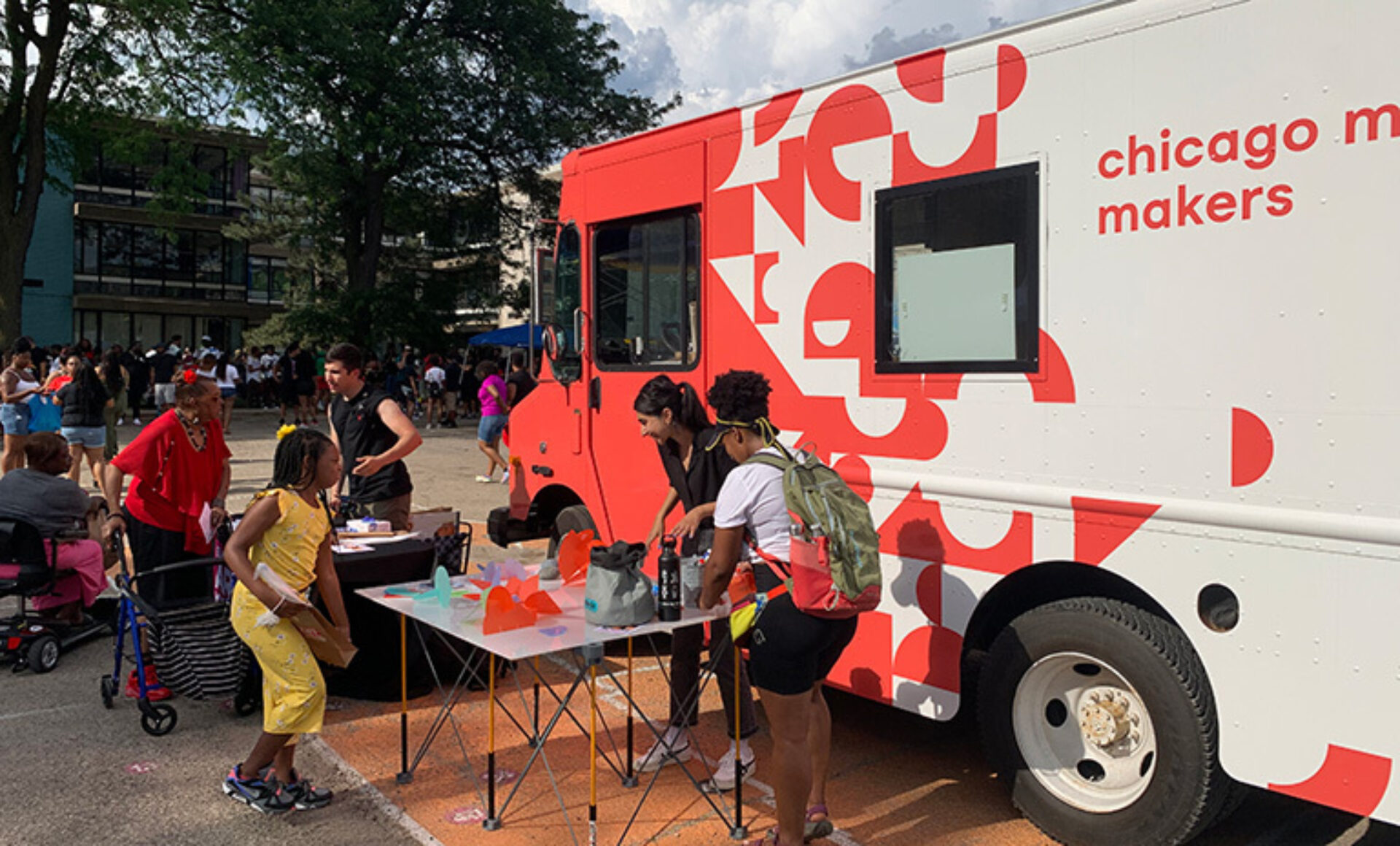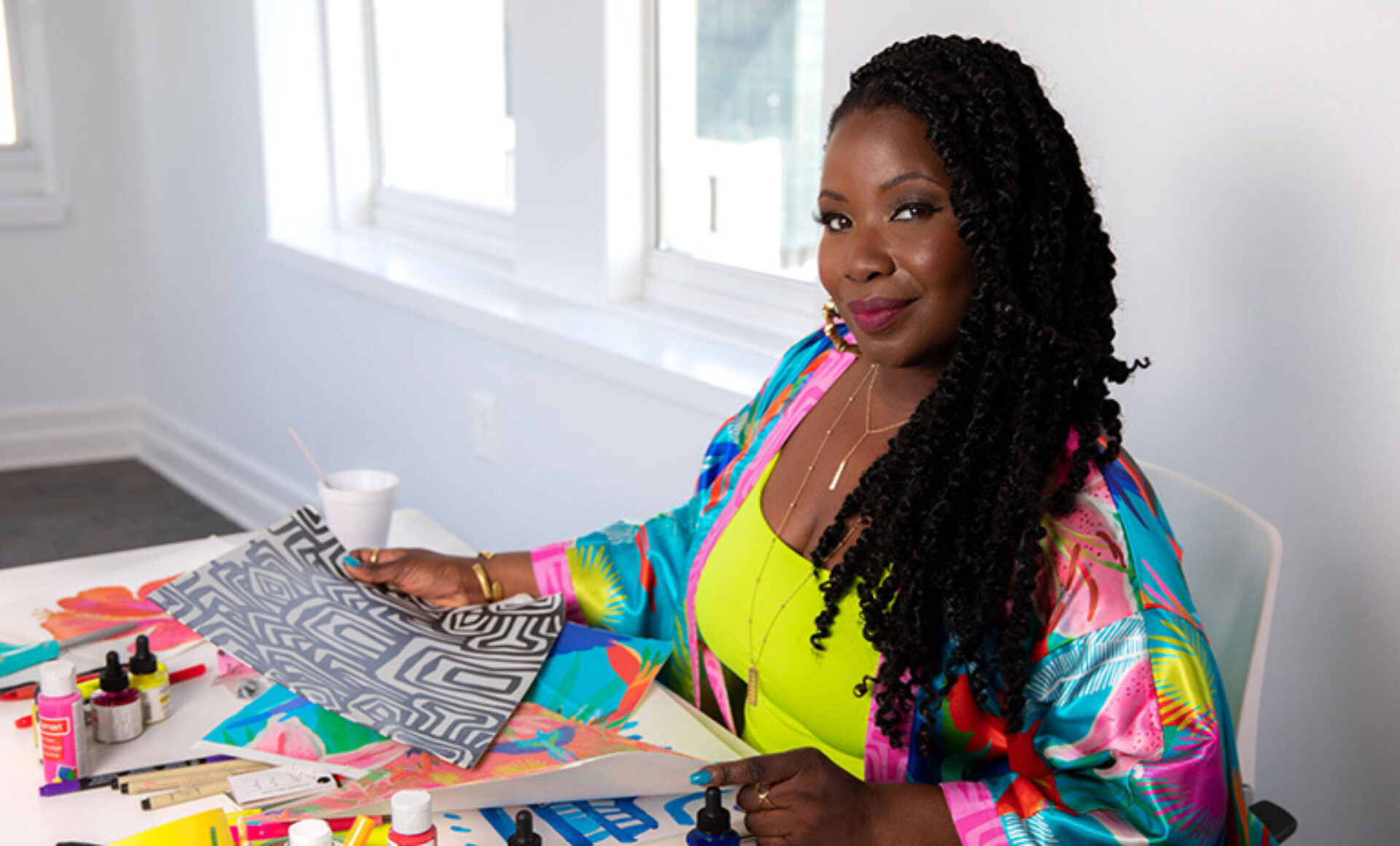Sea change starts small, with ideas and actions that transform communities and people, eventually swelling into cultural and global movements. If you start by touching the lives of those in your neighborhood, city, and workplace, your actions and ideas can ripple outward, planting the seeds of change along the way. Community activist and designer Maya Bird-Murphy, was working full time and finishing her master’s degree when she became frustrated with the lack of representation in the interior design and architecture fields, and decided to find a way to enact change locally.
On a mission to make design education more accessible and engage local residents on design projects in their communities, Bird-Murphy founded Mobile Makers, a nonprofit organization that hosts design and skill-building workshops that engages communities and youth in dialogues about the built environment. Working throughout Chicago and now Boston with a mail truck-turned mobile maker space, this year's Anna Hernandez/Luna Textiles Awardee is giving new people a seat at the design table. Making change one student at a time, she is creating a collective of diverse, underrepresented young minds that are given the opportunity to see themselves in an interior design role in the many niche roles that make up our industry.
“She is a true visionary that hasn’t wavered from her mission,” says colleague and friend Verda Alexander, IIDA, founder of Studio O+A. “She is a huge advocate for design, but believes that traditional paths don’t necessarily work for everyone. She is unafraid to be the change that needs to happen in the industry to attract and retain more voices in design.”
We caught up with Maya Bird-Murphy to talk about Mobile Makers, and how to make change.

When did you know that design was for you, and what has your career path looked like?
I knew that I liked creating things when I was young. I grew up in a community where architecture was talked about a lot, and I had the opportunity to learn about design fields at out-of-school programs. I also spent countless hours designing homes in the computer game “The Sims!” I chose to go into architecture after I attended a sleep-away camp as a junior in high school.
My career path was quite linear at first. I did a four-year architecture program, two-year Master of Architecture program, and worked at five different traditional firms. I had all intentions to continue down the traditional path, but I was frustrated by both the lack of diversity in the field and the inequities I was seeing everywhere around me in the built environment. At age 25, I was working full-time, finishing my master’s degree, and incorporating Mobile Makers.
What was the impetus to founding Mobile Makers, and what does it do?
Before I started grad school, I was feeling really disheartened about the state of the design fields in terms of equity, inclusion, politics, and climate change. I felt that I had two options: I could quit the design field or I could start my own company so I could directly address the issues I was experiencing and observing. Mobile Makers was created out of a year-long thesis project, and incorporated in September 2017. I continued working at architecture firms while running the nonprofit on the side.
Mobile Makers makes design education accessible to all people, especially those who have been historically left out of traditional design discourse. Through youth design and skill-building workshops, community engagement, public installations, and pop-ups hosted out of a retrofitted mail truck, Mobile Makers empowers communities to engage in conversations about positive change in their built environments.
Can you tell me about a project with Mobile Makers that you feel most proud of?
Every workshop series feels like a success story—it’s heartwarming and rewarding to see how much young people get out of our programs, but the singular project I’m most proud of is the Mobile Makerspace. We converted a USPS delivery van into a roving design studio that pops up all over the city of Chicago. Designing and building out the truck was a huge feat because we were fundraising while building. And, the van build-outs come with a lot of unique design challenges. Now that the Mobile Makerspace has been complete for almost three years, it’s amazing how many people have been positively impacted by it. We’ve had the opportunity to visit neighborhoods across the city like Chatham, North Lawndale, Albany Park, Belmont Cragin, and many in between.
What would you tell someone that wants to make a similar impact in their own community?
Find something small to make an impact, whether that’s volunteering in your free time or leading a new initiative. Don’t think too much about it — we often talk ourselves out of ideas, especially if starting is challenging. Change happens incrementally. If we all work on a problem collectively (in big and small ways), that’s when change happens. I believe every designer should find a way to care for their communities, advocate for change in the design fields, and/or support organizations that are out there doing the work.
What does winning this award mean to you personally and your work?
For more than five years, every move I’ve made has been in the service of building Mobile Makers. For a while, I worked two to four jobs at a time to make ends meet and only became a full-time employee of my company a year and a half ago. With all of the challenges that come with running a small business, winning the Anna Hernandez/Luna Textiles Visionary Award is a much-needed reminder that I’m succeeding and that I’ve built something special. This award is helping me keep moving forward. It’s also an important reminder to pause the daily grind and celebrate!











